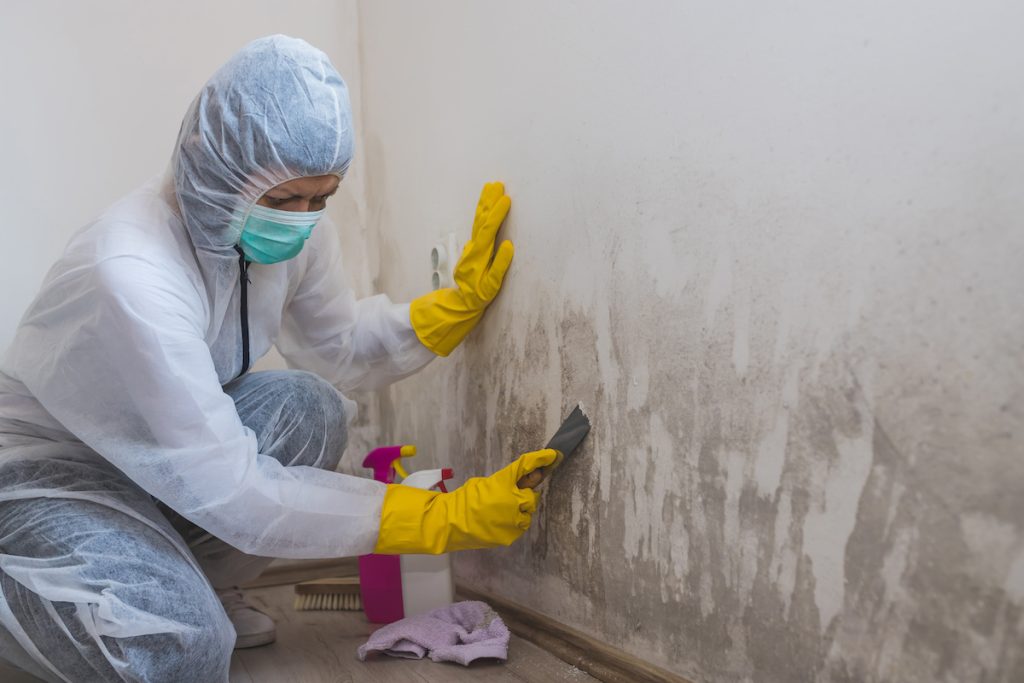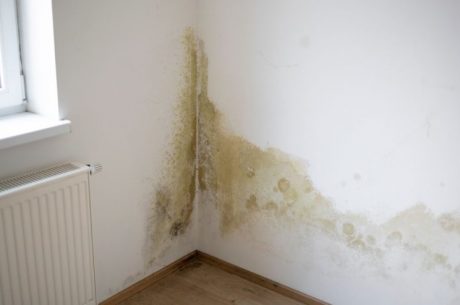Table of Contents

When dealing with mold remediation on wood, homeowners often face a tough decision—should they tackle the problem themselves or call in a professional? Mold can cause serious damage to wooden structures in homes, from flooring to beams and furniture. Additionally, mold poses health risks if not properly handled. This blog will explore both options, helping you decide whether professional or DIY mold remediation on wood is the right choice for your situation.
Mold Growth on Wood
Wood is a porous material, which makes it particularly susceptible to mold growth. Mold spores can penetrate deep into wooden surfaces, making removal challenging. Factors like moisture, warmth, and poor ventilation create ideal conditions for mold to thrive on wood. If left unchecked, mold can weaken the wood, leading to structural damage. This is why mold remediation on wood is critical, whether you opt for DIY methods or professional services.
DIY Mold Remediation on Wood
For small areas of mold, many homeowners consider DIY mold remediation on wood. Here’s what you need to know about tackling the job yourself:
Pros of DIY Mold Remediation on Wood
- Cost-Effective: DIY methods are often cheaper since you’re only paying for cleaning supplies rather than professional labor.
- Immediate Action: You can start working on the problem as soon as you spot mold, which can prevent it from spreading further.
- Satisfaction: Some people enjoy the challenge and sense of accomplishment from handling home improvement tasks themselves.
Cons of DIY Mold Remediation on Wood
- Limited Effectiveness: DIY mold removal methods may not reach deep into the wood where mold spores have embedded themselves, leaving the risk of regrowth.
- Health Risks: Without proper protective gear, you may expose yourself to harmful mold spores, leading to respiratory issues or allergic reactions.
- Time-Consuming: Mold remediation on wood can take significant time, especially if you’re unfamiliar with the process or don’t have the right tools.
DIY Mold Remediation Process
If you decide to go the DIY route, here’s a basic guide to mold remediation on wood:
- Safety First: Always wear protective gear, including gloves, a mask, and goggles, to prevent exposure to mold spores.
- Identify the Source: Mold is often caused by water damage or excessive moisture, so locate the source and address it before remediation.
- Use Appropriate Cleaning Solutions: A mixture of vinegar, baking soda, or a commercial mold remover can be effective. Apply it to the affected area and scrub with a stiff brush.
- Dry the Wood Thoroughly: Mold thrives in moisture, so it’s crucial to ensure the wood is completely dry after cleaning to prevent regrowth.
- Monitor for Recurrence: Keep an eye on the treated area for any signs of mold returning.
Professional Mold Remediation on Wood
For larger mold problems or if mold has spread to critical wooden structures, professional mold remediation on wood is often the better choice. Here’s why:
Pros of Professional Mold Remediation
- Thorough Removal: Professionals use advanced techniques and equipment to ensure mold is completely removed from the surface and deep inside the wood.
- Safety: Mold remediation companies have specialized protective gear and know how to safely handle mold, minimizing health risks to you and your family.
- Expertise: Professionals are trained to detect hidden mold, assess the extent of the damage, and determine whether parts of the wood need to be replaced.
- Prevention Measures: Along with remediation, professionals often provide solutions to prevent future mold growth, such as improving ventilation or addressing water damage.
Cons of Professional Mold Remediation
- Cost: Professional mold remediation on wood can be expensive, particularly for extensive infestations or structural repairs.
- Scheduling: Depending on the availability of the service, you may need to wait for an appointment, which could allow mold to spread further.
- Less Control: Some homeowners prefer the hands-on approach of DIY and may feel less involved when hiring professionals.
What to Expect from Professional Mold Remediation on Wood
When you hire a professional, the process is typically more thorough and follows these steps:
- Inspection: Professionals will assess the affected area and determine the severity of the mold problem.
- Containment: To prevent mold from spreading to other parts of the home, professionals will isolate the contaminated area.
- Remediation: Using specialized equipment like HEPA vacuums and air scrubbers, they’ll remove mold from the wood and surrounding surfaces.
- Cleaning and Restoration: Professionals will clean the area with industry-grade solutions and may offer restoration services if the wood has been severely damaged.
- Post-Remediation Testing: Some companies will test the air and surfaces to ensure all mold has been eradicated.

Deciding Between DIY and Professional Mold Remediation on Wood
To determine whether DIY or professional mold remediation on wood is the best option for you, consider these factors:
- Extent of the Mold Growth: Small, localized mold growth can often be handled with DIY methods, but large infestations or mold that has spread into structural wood usually require professional help.
- Health Concerns: If anyone in your household has mold-related allergies or respiratory issues, hiring a professional is safer.
- Time and Resources: If you have the time, tools, and knowledge to handle the process yourself, DIY may be viable. However, if you’re unsure or lack the necessary equipment, professionals can save you time and ensure the job is done right.
- Budget: DIY methods are cheaper upfront, but professional mold remediation may save you money in the long run by preventing further damage and mold recurrence.
Conclusion
Whether you choose DIY or professional services for mold remediation on wood, addressing the problem as soon as possible is crucial. Mold can cause significant damage to wood structures and negatively impact the health of those living in your home. For minor mold growth, DIY methods can be effective with the right precautions. However, for larger or more persistent mold problems, professional mold remediation on wood ensures a thorough, safe, and long-lasting solution.
Call us on +1 305 894-4343 for professional mold remediation. We are available 24/7 to respond to your calls.


